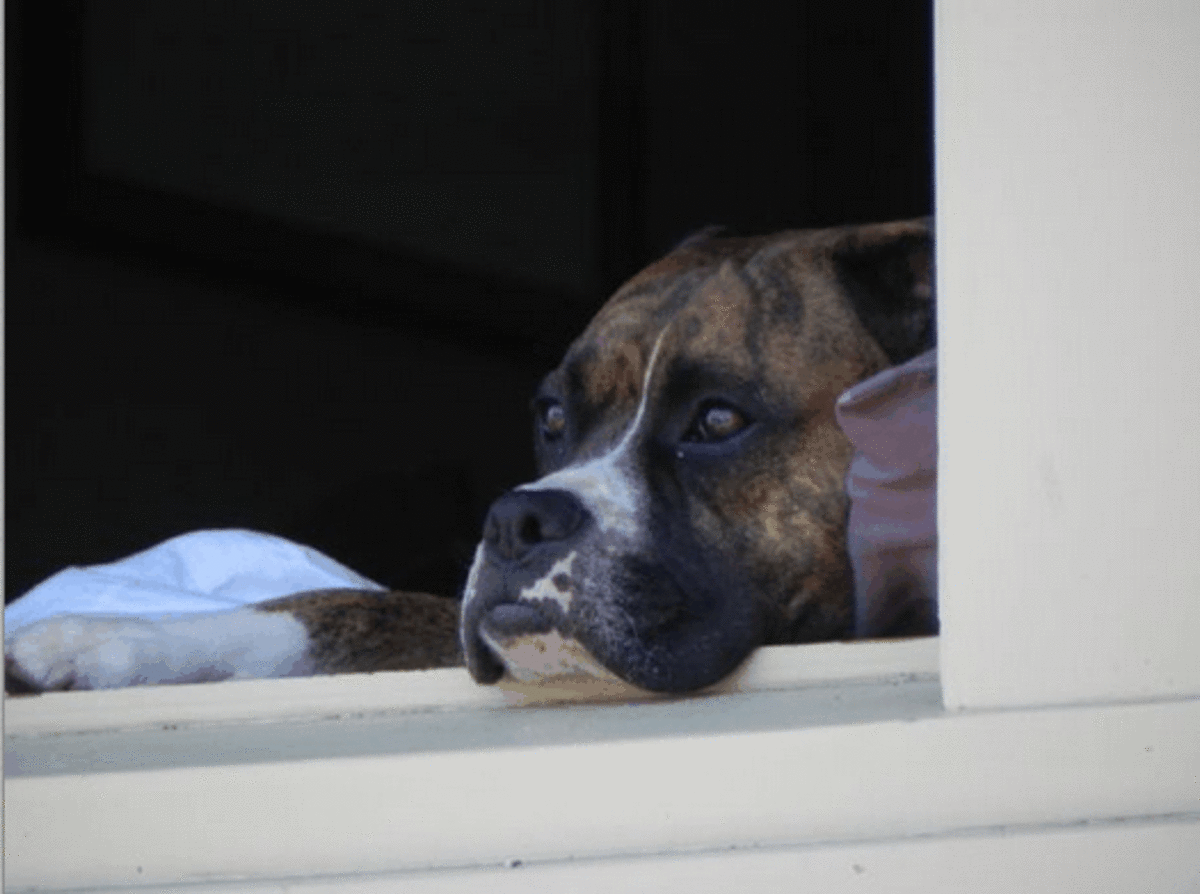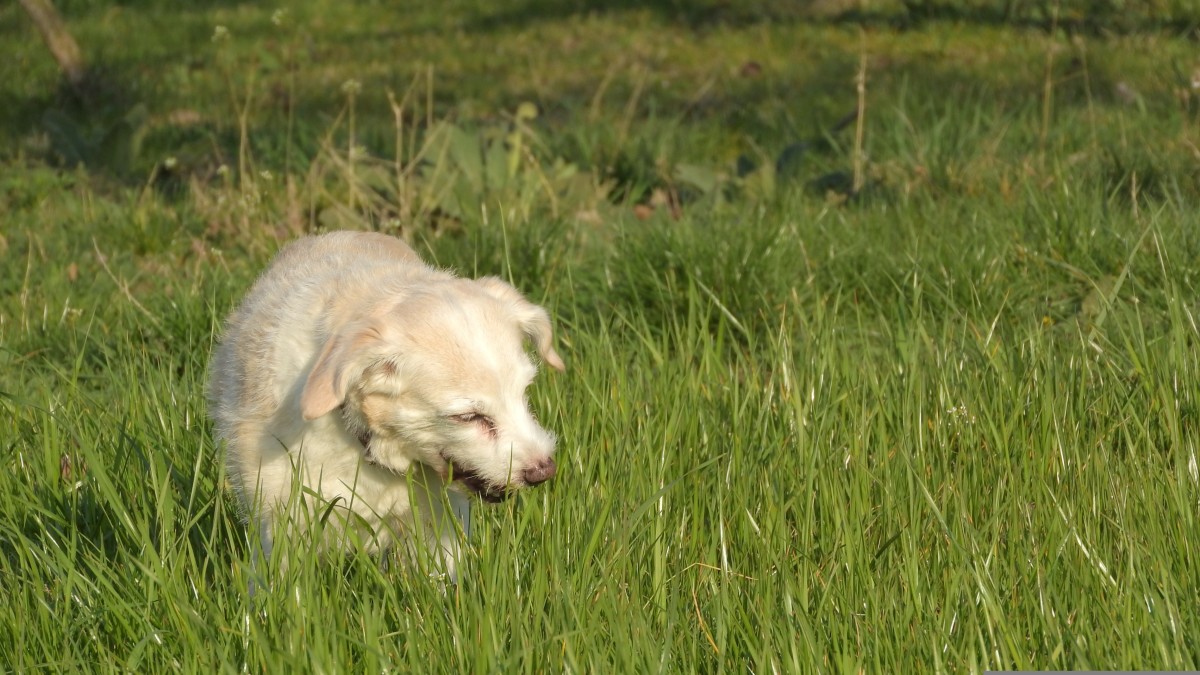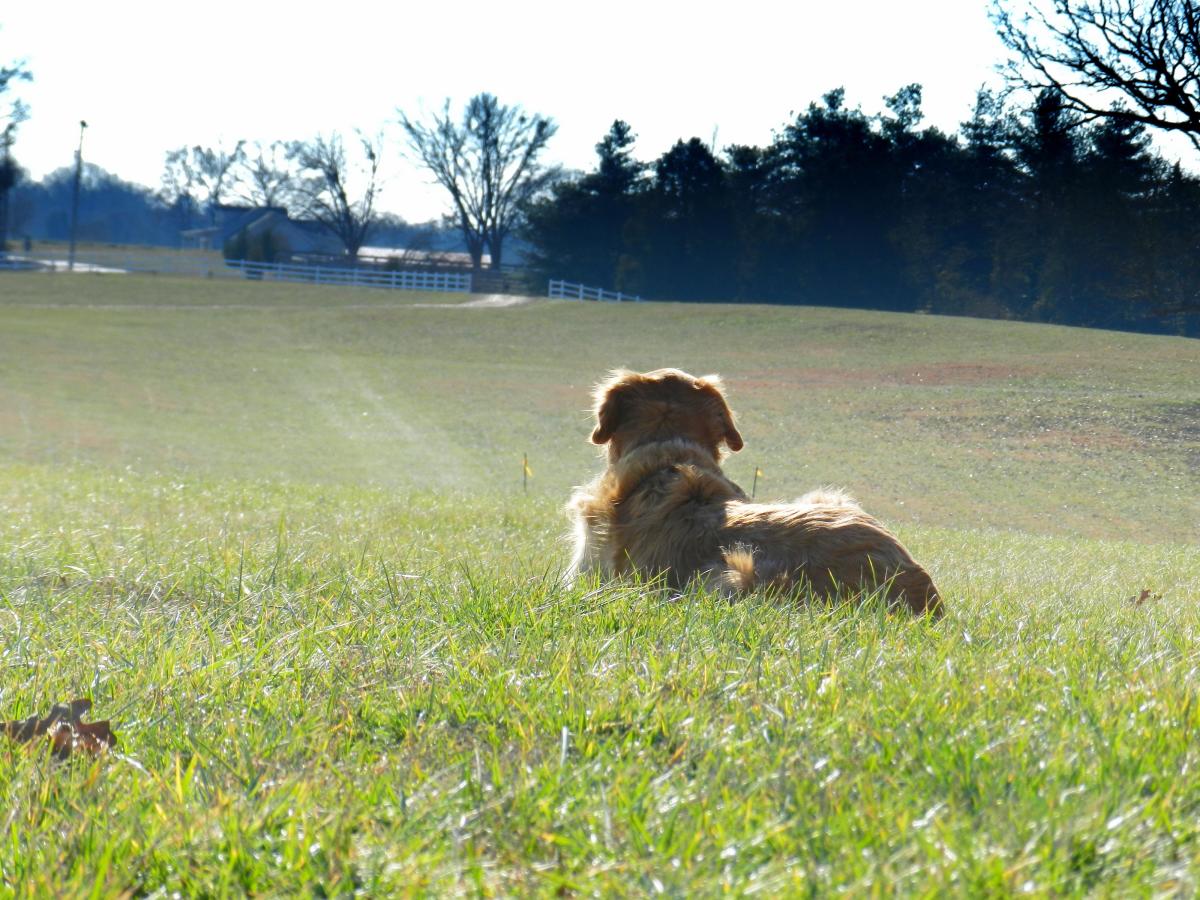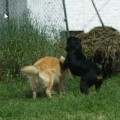Dog Separation Anxiety Solutions and Management

Owners of dogs with separation anxiety know for a fact how heartbreaking this condition is and how difficult life can be alongside these canines. Many owners are home bound, worrying about leaving their pals behind, in fear of finding a destructed home, or worse, in severe cases, an injured dog. It's not unheard of for some dogs to even break through glass windows, self-mutilate themselves, or scratch doors and walls until their nails and teeth are bleeding.
Owners of dogs with separation anxiety are often desperate for a solution. They are exhausted from finding damaged entry ways, accidents on the carpet and puddles of drool. Contrary to what many may think, the solution to separation anxiety is not only strictly through desensitizing and counterconditioning the dog to fake departures. Actually, in order for treatment to be effective it often requires a synergistic, holistic approach employing a variety of strategies.
Just as many other behavior problems in dogs, separation anxiety treatment requires an insight into a dog's lifestyle tackling medical, nutritional, and behavior issues altogether. This synergistic approach offers a higher chance for success since it's targeting through different approaches and there are less chances for something to be missed.
Separation Anxiety Management and Solutions
So you know you have a dog suffering from separation anxiety. The symptoms start only when you are about to leave. The items chewed are windows and doors and items that have you scent such as the remote control. Your perfectly house trained dog soils when you leave, or leaves puddles of drool. Upon recording the behavior, you notice your dog never settles, barking, whining, chewing, digging the whole time until your return. Following are some solutions and management options.
- See your Veterinarian. There are times when separation anxiety is triggered by a medical problem. Separation anxiety in a senior dog, may signal hearing or vision loss, causing the dog to become more clingy to the owner. In some cases, in elderly dogs, it can be a sign of canine cognitive dysfunction. If your dog is young, he may have a medical problem that is making him more needy than usual.
- Consult with a dog trainer/behavior consultant experienced in treating this condition. Many times, what owners think is separation anxiety is only boredom. Separation anxiety is often over diagnosed. A dog who chews the couch when the owner is away may just be killing time by having fun or venting his frustration. A dog who whines the first 10 minutes and then settles is not separation anxiety.
- Exercise. You want the dog to be relaxed before you are leaving. A dog with boundless energy left alone doesn't do well, and in a dog with separation anxiety, all that pent-up energy will for sure go into rehearsing the unwanted behavior of barking/digging/scratching. Often separation anxiety is worst in the early morning, as the dog is happy to see it's owners after a night of sleep. A nice, long and brisk walk in the morning would be helpful in this case. Skip playing fetch or ball for just 10 minutes, as you'll get your dog all hyped up and with the adrenaline running n when you suddenly leave, you'll be left with a dog that will be worse than before.
- Nutrition. You want your dog to be on a high-quality diet. A meal loaded with fillers such as corn and byproducts may have the dog bouncing off the walls when you leave. Studies have shown that corn, for instance, lowers triptophan levels in dogs which aids the body in using serotonin. Eliminating all corn from the diet may be helpful and switching to a higher quality diet may already show behavioral changes in dogs within 3 weeks.
- Behavior Modification: as mentioned, an integral part of the therapy is based on modifying behavior through desensitization and counterconditioning. In this case, the dog is desensitized to pre-departure cues one by one and then chained together and counterconditioned to accept small absences by leaving treats and stuffed Kongs. Such set ups need to be of different duration mixing in short absences and longer absences However, you don't want to give a stuffed Kong only when you leave or this will become part of your pre-departure cues. Another great way to accomplish this is through clicker training (see video below).
- Calming Aids. To help your dog through behavior modification there are some calming aids that can help your dog stay better under threshold. Composure, is an over-the-counter chew by Vetri-Science that helps alleviating anxiety. DAP diffusers release pheromones that can help dogs with anxiety. Other aids include Thundershirts or Anxiety Wraps, recorded music for dogs (Through a Dog's Ear) and in severe cases, prescription medications such as Clomicalm and Reconcile. Many owners have found that leaving music or the TV on help dogs cope better, as long as this done as well, when the owner is not leaving, otherwise it becomes as well a pre-departure cue. Some like to record daily activity noises like noises when washing the dishes, talking on the phone and playing them when the dog is alone.
- Confidence building. Dogs with separation anxiety need to gain more confidence. It's almost as if these dogs are unable to function when their "other half" is away from the home. Clicker training, obedience training, agility, nosework are some great confidence building options. If your dog follows you room to room or sleeps in your bed, work on installing baby gates and getting him used to brief absences and give him a dog bed at a distance from your bed.
- Management: you'll need to try your best to prevent your dog from rehearsing the anxious behavior. The digging/barking/whining are self-reinforcing behaviors as they help release frustration, and if the dog is doing that when you come back home, the dog gets in the mode of thinking that it's thanks to his behavior that you ultimately came back. In order to work on behavior modification you will need to endure in staying at home as much as possible, especially during the initial weeks.Getting a pet sitter/friend/relative or taking him to dog daycare may help if you need to leave your dog during this phase. If you must leave, and your dog gets nervous at the sound of the car, park your car farther away the day prior, then on departure day, close the door without making much noise, and walk to the car so the engine noise is possibly muffled with the other cars and your dog hopefully won't pay much attention to it. Depending on how severe the anxiety is, some dogs may do better in a crate and some absolutely not. This is something you will need to evaluate. Some dogs who tend to pace a lot, once in the crate, stop doing so. Others will panic so much they risk getting hurt once in the crate, especially if it's a metal crate or if they tend to self-mutilate. Several dogs do better left in a bedroom because people's scent is there more.Kitchens are good options for dogs who soil. Giving the whole run of the house is counter-productive, especially when the dogs ruin windows and doorways. It's best to choose a room and make it an extra happy place to be.
- Remote Monitoring. You want to be able to record your dog's behavior during set ups, and if you can afford it, it would be ideal to have a web cam that you can monitor from outside so you know what's going on and when it's best to return inside (you don't want to do so when the dog is actively whining/barking or you'll reinforce it.) Some iPhones have an I-cam application that may help monitor your dog remotely, or you can record yourself with Skype with your mobile phone and start a video conference.
- Low Key Demeanor: the whole way you manage the situation, basically, your demeanor has a huge impact on how your dog manages your absences. Don't make a big deal when leaving the home and when coming back. Act normally and matter-of-fact.
The above solutions and management tips can sound like a handful, but the good news is that according to Certfified Appied Animal Behaviorist, Patricia McConnell in her book "I'll be home soon", separation anxiety treatment has a very high rate of success that in most cases should yield results in about six to eight weeks.
Alexadry© All rights reserved, do not copy
References: 2 great separation anxiety books I highly recommend:
Patricia McConnell ," I'll be home soon!"
Nicole Wilde: "Don't Leave Me!"
Disclaimer: this article is not to be used as a substitute for veterinary, behavioral or nutritional advice. If your dog developed symptoms congruent with separation anxiety, consult with your vet and then once a clean bill of health is obtained, get a referral for a qualified dog trainer/behavior consultant. By reading this article you accept this disclaimer.
Separation Anxiety Solution with Clicker Training
For further reading
- How to Stop a Dog From Following You Everywhere
Does your dog follow you everywhere from room to room? What can you do to stop overly clingy behavior? Strategies to increase independence and confidence in your dog. - How to Use Desensitization to Cure Dog Separation An...
Separation anxiety in dogs can be distressing and make the life of dogs and owners quite miserable. Desensitization can help cure separation anxiety. - Why is My Elderly Dog Suffering From Sudden Separati...
Dog owners often believe that separation anxiety is a condition that only arises in dogs when they are young, and therefore, they assume that their elderly dog is spared from such condition, since the dog has never exhibited any signs of such... - Dog Behavior: Why Do Dogs Bark When Left Alone?
Is your dog barking when left alone? If so, you need to identify the cause of the barking so you can address the issue. - A Guide to Dog Behavior Modification Techniques and ...
Say NO to coercion and say YES to rewards. Learn effective modern based dog behavior modification techniques. As the words imply, behavior modification entails modifying a dog's behavior for the purposes of increasing or decreasing wanted and... - Dog Behavior: Can you Reinforce Fear?
We are always told not to pet, cuddle or comfort a fearful dog because this may reinforce fear. But can you really reinforce fear in your dog? Learn what the experts say about this. - Dog Anxiety Treatment: Dog Thundershirt
Treatment for anxious dogs A new product has been recently launched on the market in high hopes of helping thousands of anxious dogs. This product is known as ''Thundrshirt'' since it can be used to ease a dog's fear of thunder, and has so far had a.






